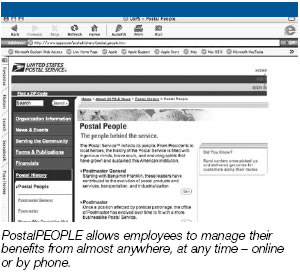8. Optimize Mailer Preparation
The Postal Service will continue to work closely with MTAC, PCCs, the Mail Technology Strategy Council and at the National Postal Forum and other mailing industry venues to optimize mailer preparation requirements. The goal is to improve service quality and reliability, while increasing efficiency and achieving lowest combined cost.
Standardize Critical Entry Times by Class and Location
The Postal Service establishes critical entry times for facilities based on its ability to process the mail to meet service standards. Local postal facilities will continue to review and determine critical entry times for First-Class Mail and Periodicals by location. Establishing national standardized entry times for Standard Mail is under consideration. Managers will continue to work with mailers to use the Facility Access and Shipment Tracking system to schedule appointments at times that meet their needs but recognize local facility capacities. Realistically, all mail cannot be adequately processed if every mailer arrives at the same time.
Explore Additional Preparation Options to Increase Container Densities
As the Postal Service moves toward flat sequencing, there is an increased value in providing an option for flat mailers to prepare mailings with mixed classes (Periodicals and Standard Mail) through co-mailing and copalletization. A pilot of this initiative involving several interested customers is underway. Combining mailings with pieces of the same shape but across classes can further reduce the number of bundles and containers within the mailings and improve presort and drop ship penetration. The Postal Service will continue to take steps to reduce the use of sacks and evaluate the economies of using alternate containerization.
To maximize the transportation and sortation capacity by helping to reduce the number of partially filled trays, the Postal Service in 2007 offered a reduced-overflow tray option on First-Class Mail for automation letters. High-density trays reduce air transportation and handling cost significantly. Related cost reduction efforts include increasing use of pallets, improving container labeling and tracking, and working with mailers to ensure that customer sorting requirements (e.g., labeling lists) are frequently updated.

9. Streamline Business Processes
In addition to operations, all postal support functions are examining their activities to streamline processes and eliminate non-critical expenses. Major areas of focus include expanding supply chain management (SCM), standardizing information technology, using shared services to centralize accounting and personnel transactions, and consolidating legal support.
Maximize Supply Chain Management Opportunities
Supplier-related costs account for almost 20 percent of postal operating expenses, so the performance of key suppliers has a direct bearing on postal financial performance. The Postal Service continues to expand SCM to eliminate waste, improve quality, and reduce cycle time. New e-business solutions, such as automated invoicing and electronic solicitation, are targeted for broader implementation to improve standardization and drive down costs. In 2008 a supplier relationship management tool will be deployed to improve supplier performance and collaboration. Among other functions, the software automates subcontract reporting.
The Postal Service is exploring ways to realize efficiencies by developing an integrated and standardized approach to managing postal assets. Potential integration opportunities include consolidated warehousing and distribution networks and standardized processes for inventory management, material handling, order processing, packaging, parts and service support, and asset recovery. Possible technology options are also being evaluated to reduce the number of legacy systems and increase the visibility and control over assets.
The Postal Service will continue to identify and leverage supplier capabilities, including the innovative capabilities of small, minority-, and women-owned businesses. Commodity strategies for supplies, services, transportation, equipment, and facilities will target new cost savings, and industry benchmarks will be used to assess and improve cost performance against leading supply chain management companies.

